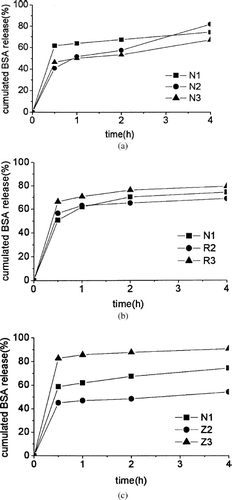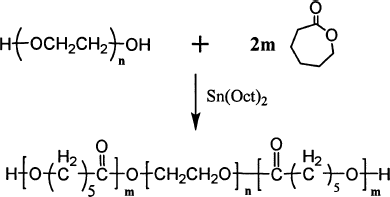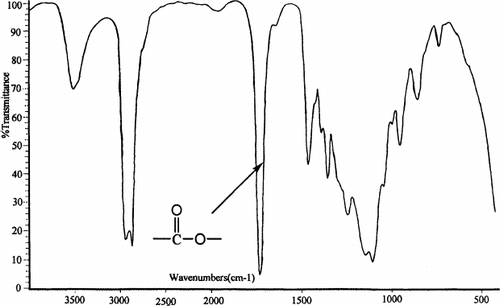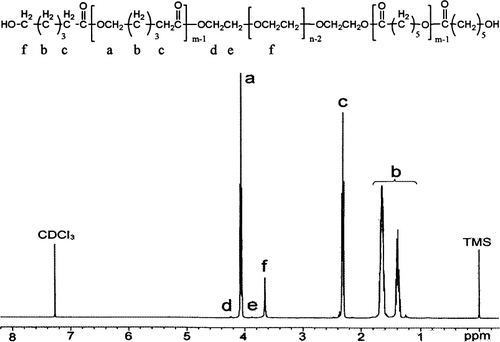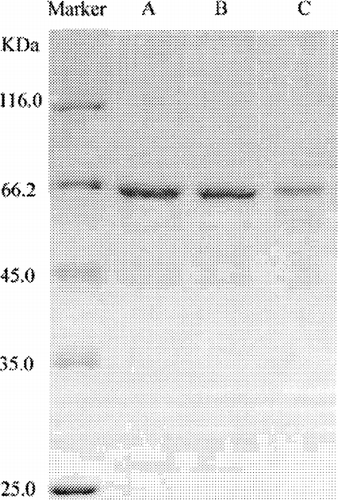Figures & data
TABLE 1 Preparing parameters for PCEC nanoparticles
TABLE 2 Basic data of PCEC nanoparticles prepared in mean values (n = 3)
FIG. 3. SEM morphology of various nanoparticles prepared by different organic solvents (with different mixing ratio of DMSO and CH2Cl2). (A) Organic phase is DMSO, degradation Time T = 0d (A1), T = 3 d (A2), and T = 5 d (A3). (B) Organic phase is DMSO + CH2Cl2, degradation Time T = 0d (B1), T = 3d (B2), and T = 5d (B3). (C) Organic phase is CH2Cl2 only, degradation Time T = 0d (C1), T = 3d(C2), and T = 5d (C3).

FIG. 4. Release profiles of BSA nanoparticles in phosphate buffer at 37°C and pH 7.4 in 120 hr. (a) Effect of inner aqueous phase on BSA release profiles of PCEC nanoparticles: release profiles of N1, N2, and N3. (b) Effect of organic solvent on BSA release profiles of PCEC nanoparticles: release profiles of N1, R2, and R3. (c) Effect of drug loading on BSA release profiles of PCEC nanoparticles: release profiles of N1, Z2, and Z3.
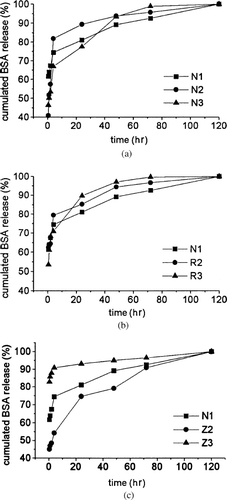
FIG. 5. Release profiles of BSA nanoparticles in phosphate buffer at 37°C and pH 7.4 in 4 hr. (a) Effect of inner aqueous phase on BSA release profiles of PCEC nanoparticles: release profiles of N1, N2, and N3. (b) Effect of organic solvent on BSA release profiles of PCEC nanoparticles: Release profiles of N1, R2 and R3. (c) Release profiles of N1, Z2, and Z3.
